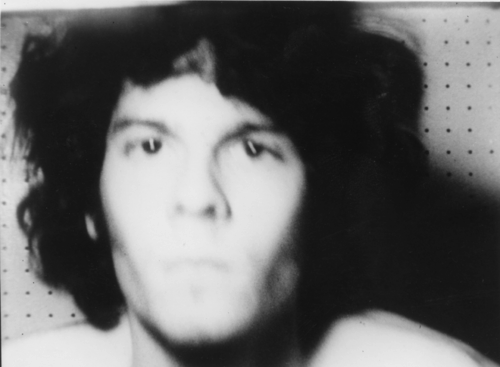
‘Owen Land, formerly known as George Landow, was a really really great filmmaker. His films are like no others. I first saw Landow’s early standard-8mm films (which may be no longer extant — is that right?) such as Are Era and Not a Case of Lateral Displacement at an open screening in New York in the summer of 1964 or 1965. Open screenings, even back then, tended to have many films that weren’t so interesting. Landow’s not only engaged me, but seemed both great, and unlike anything I had seen before. One seemed to be long takes of a wound. Are Era was shot off TV, very rapidly cut (in camera I assume), showing a TV head both right side up and upside down. Still in my teens, I had only recently discovered cinema, and had never heard of Landow before that screening. “Structural film” had not yet been so named, so the statement from the gallery that Land’s “debut” was a “critique of structural film” is not right, as a “genre” that has not yet been named is not exactly ready for its “critique.”
‘It’s true that Land was not the most sociably adept of people. But one would not expect that from his films. If you understand his films, you understand that communication in them is always paradoxical. His fascination with palindromes (and he and I exchanged a few ordinal palindromes at times) was only a bare surface indication of his films’ profound inwardness, an inwardness that was not one of psychological interiority, as in Brakhage, but of irreconcilable paradox. Land was fascinated with cinema’s artificiality, and his use of film imagery was profoundly hermetic; it always feels as if his film images are spiraling inward, collapsing in on themselves.
‘He was not necessarily the friendliest instructor for young filmmakers interested in “self-expression.” He wasn’t very patient with long, self-indulgent, emotionally-laden “personal” films. I once saw him advise a student, correctly in my view, that the student did not have the distance needed to deal with the family footage he was trying to fashion into a film. But those who so easily make personal voiceover pieces today (in which a voiceover narrates autobiographical details on the sound track which the images illustrate) might have something to learn from really studying Landow’s deeply hermetic art, an art I find true in some deep way to the truths of images either on film or seen with the eye: Do we really know what any image might mean, or how it might “feel”?
‘There is much humor in Land’s work, and one genuine belly-laugh for those who had had their fill of the academic use of Hollis Frampton’s (admittedly wonderful) (nostalgia) to illustrate “structural” film: The film within Land’s Wide Angle Saxon titled Regrettable Redding Condescension, credited to someone named “Al Rutcurts” (remember Land’s love of palindromes), which was indeed a “critique” of “structural film.”
‘I wish “experimental” cinema had more true originals such as Land, filmmakers who find a new and original use for cinema, a new type of film grammar, which, of course, can also lead to a new type of thinking. In my view, the “project” of “experimental” film at its best has always been that of forging new types of consciousness, new was of conceiving of the world, new ways of being in the world.’ — Fred Camper
___
Stills


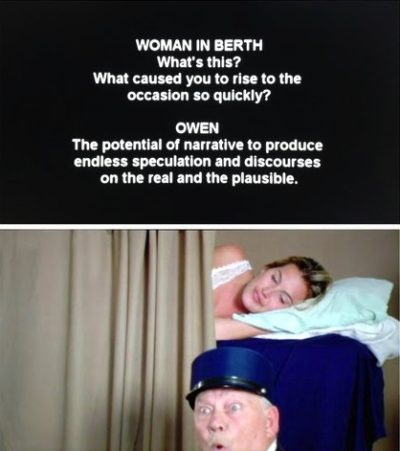
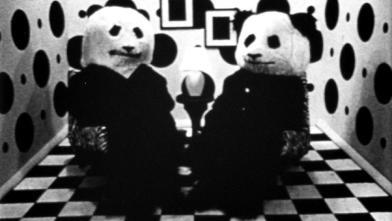

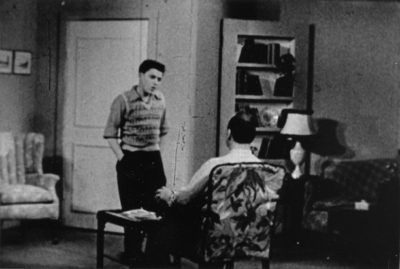

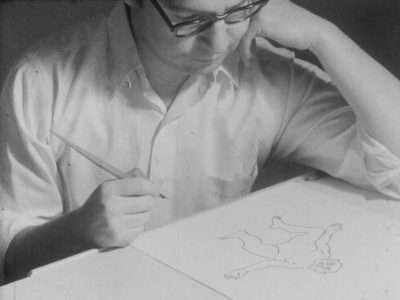
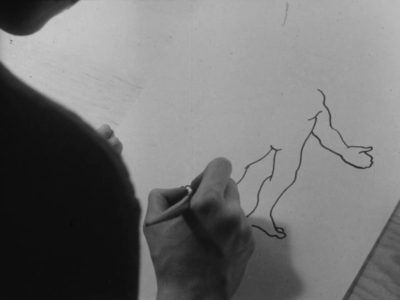
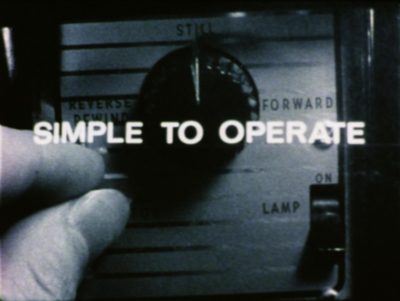
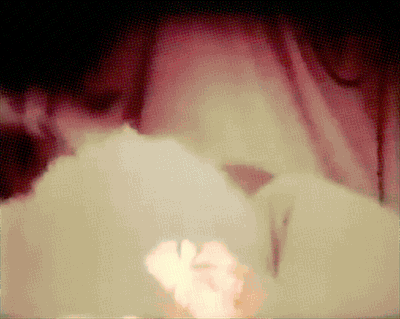

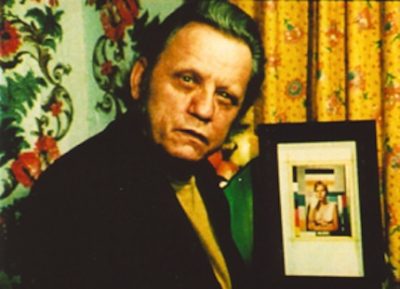
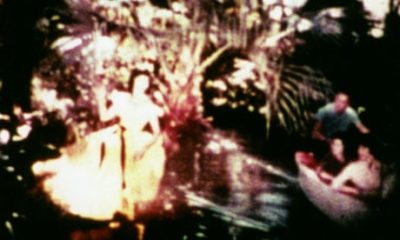
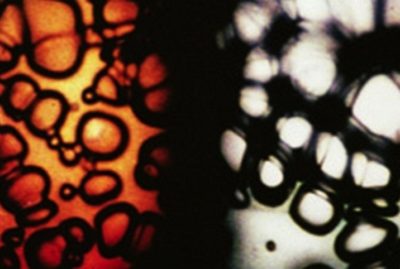

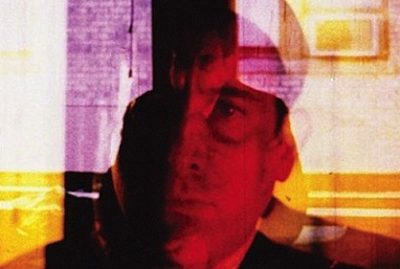
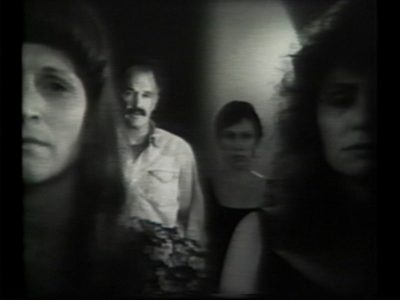
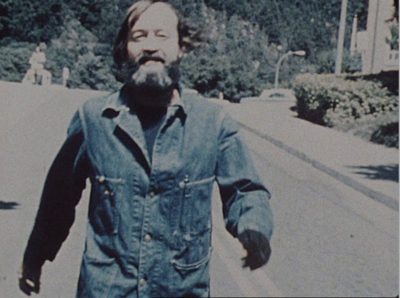


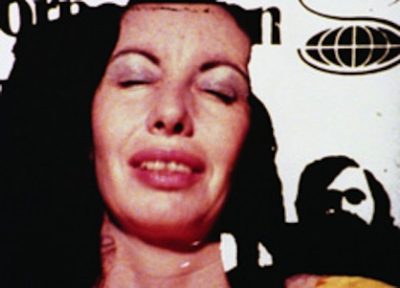




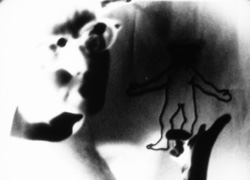
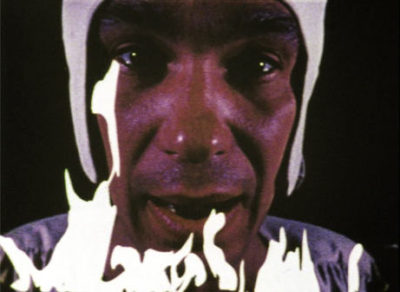
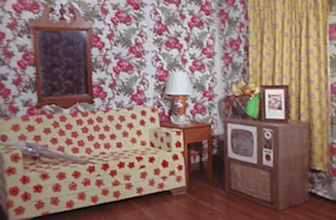


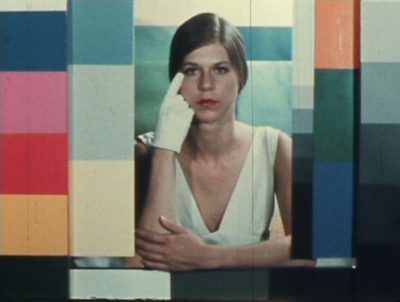
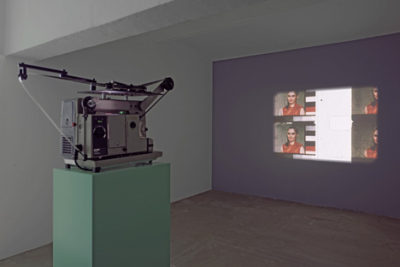
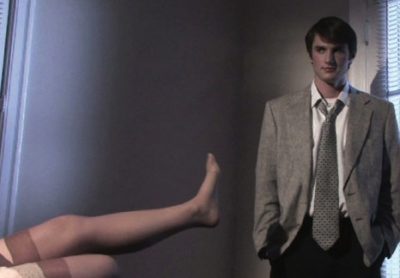

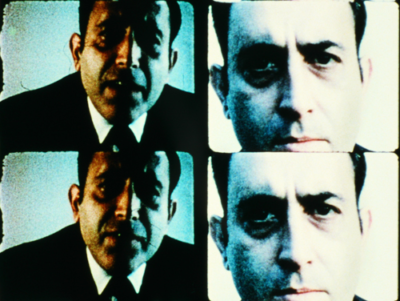
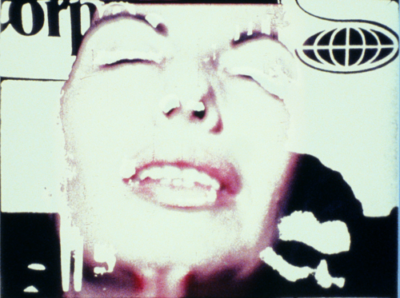
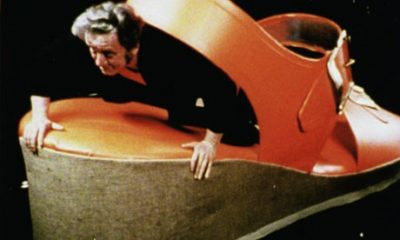

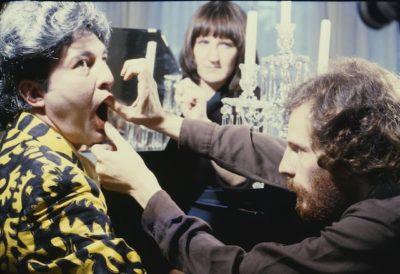

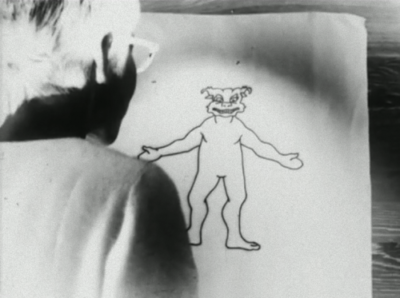





_____
Further
Owen Land @ IMDb
‘Owen Land (1944-2011)’ @ LUX
The Films of Owen Land @ Harvard Film Archive
Owen Land @ Office Baroque Gallery
Book: Mark Webber ‘Two Films by Owen Land’
Owen Land @ mubi
‘Avant-gardist Owen Land Comes Out of the Shadows’
________
Documentary
‘“So, how’s that avant-garde film you’re working on going?” Hopefully, that question will be met with a fun, answer like “Oh great, it’s a really interesting project.” However, director Ben Lazarus has documented the resentful feelings of the disgruntled crew who worked on Owen Land‘s Dialogues, which was filmed in Los Angeles. In the Land of Owen, which features footage not in the original film, is a documentary of the aftermath of a film production gone haywire. Word of warning: This video is NSFW as it contains lots of nudity.
‘There is no actual footage of Land directing in In the Land of Owen. There are a couple of still pictures of him where he doesn’t look very well and some of the interviewees talk about him being ill and having had a stroke. But without actual footage of him directing and no direct interview with him, it’s tough to determine exactly how the production of Dialogues descended into complete chaos.
‘Many of the crew members and actors refer to Land as if he was a tyrannical crank on set, including being verbally abusive, but details of the abuse are not given. Some crew members are still incredibly hostile and bitter, while others kind of laugh off the flakier aspects of Land’s personality and behavior. One shocking revelation is that the first director of photography on the film has withheld over half of the footage shot of Dialogues due to non-payment.
‘One recurring topic of the documentary is that everyone on the crew was not only completely baffled by what Land was shooting, but that was a source of frustration. I don’t know if that’s because this was an L.A. crew or if the crew just generally wasn’t into avant-garde and underground filmmaking. The clips that were withheld from Dialogues and that appear in this documentary make it look like a fun film. And I totally don’t agree with the one actor’s assessment that making a film “irritating” is a goal of a lot of experimental filmmakers. That sounds like the reaction of somebody who just expects all films to have clear narratives.
‘There aren’t many “making of” documentaries about avant-garde films. Hearing about the tribulations of making Dialogues in In the Land of Owen is really pretty fascinating; and it’s a very well put together and entertaining documentary by Lazarus.’ — Underground Film Journal
____________
Interview 2009
_______
Obituary
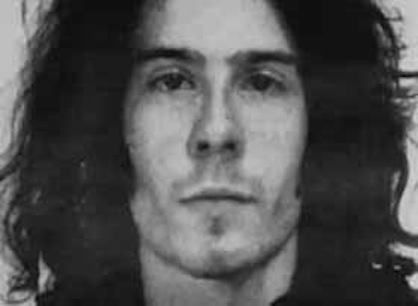
‘A question that one should never ask an experimental film-maker is: “What is your film about?” George Landow, who has died unexpectedly aged 67, would probably have responded: “It’s about eight minutes.” Along with many other “structural” American film directors in the 1960s and 1970s, Landow – who changed his name to the semi-anagram Owen Land in 1977 – rejected linear narrative, giving primacy to the shape and essence of film. “I didn’t want to make films that were narrative. I found the whole traditional narrative approach was really non-visual,” he commented.
‘Landow trained to be a painter. This is demonstrated in the self-explanatory title of Landow’s Film in Which There Appear Edge Lettering, Sprocket Holes, Dirt Particles, Etc (1966). What he called “the dirtiest film ever made” consists of four identical images of a blinking woman, off-centre, made to appear as a loop without a beginning and end, giving prominence to the sprocket holes and edge lettering on the 16mm film, components that audiences do not normally see. Landow used “found footage”, in this case a Kodak colour test, throughout his oeuvre, where film itself is the subject matter.
‘Landow later parodied his early experimental films and those of his mentors, Stan Brakhage and Gregory Markopoulos, with jokey titles such as On the Marriage Broker Joke As Cited By Sigmund Freud in Wit and Its Relation to the Unconscious Or Can the Avant-Garde Artist Be Wholed? (1977–79). This features two actors dressed as pandas who discuss film in a false-perspective room patterned with checks and polka dots. “What is a ‘structural film’?” asks one. “That’s easy, everybody knows what a structural film is,” comes the reply. “It’s when engineers design an aeroplane, or a bridge, and they build a model to find out if it will soon fall apart. The film shows where all the stresses are.” The pandas then suggest strategies for marketing Japanese salted plums illustrated by a Japanese publicity film created to look like found footage.
‘Remedial Reading Comprehension (1970), in the form of an educational film that is part of a woman’s dreams, uses colour footage of an auditorium of people who are about to watch a film, a mock television commercial about rice, text from a speed-reading manual, and the director himself running, with the superimposed words, “This is a film about you … not about its maker.” In New Improved Institutional Quality: In the Environment of Liquids and Nasals a Parasitic Vowel Sometimes Develops (1976), a middle-aged man attempts to carry out a test full of seemingly meaningless instructions before entering transcendence through a woman’s shoe.
‘Dialogues, his valedictory film, was based on his own bizarre and comic sexual encounters with women and his relationship with his contemporaries, including a mocking portrait of Maya Deren, the avant-garde film-maker. He was given a retrospective at the Rotterdam film festival in 2005. This programme then moved to the Tate Modern in London, the Whitney Museum of American Art in New York and the Pompidou Centre in Paris. In 2009, his work was presented at the Kunsthalle in Bern and the Kunst-Werke, Berlin.
‘This was the last film Landow made before becoming Owen Land and leaving the underground film scene for more than three decades. He reappeared with his last film, Dialogues (2009). Little is known of his movements in between. He spent a year in Japan and taught film at US universities throughout the 1970s, and settled in Los Angeles in 2006. Landow died as mysteriously as he had lived. His death was announced a month after his body was found in his Los Angeles apartment.’ — Ronald Bergan, The Guardian
_____
8 of Owen Land’s 17 films
_______________
Film In Which There Appear Edge Lettering, Sprocket Holes, Dirt Particles, Etc (1965-66)
‘This film takes the view that certain defining characteristics of the medium, such as those mentioned in the title, are visually “worthy”. For this reason it is especially recommended.’ — Lux
‘The richest frame I have seen in any film when you take into consideration all movements lines the beautiful whites, and reds and blacks… The kinetic and visual experienced produced by Landow’s film is even more difficult to describe… There is humour in it (the blink); there is clear Mozart -(Mondrian)- like sense of form … ‘ — Jonas Mekas
______________
The Evil Faerie (1966)
‘The Evil Faerie is a movie starring Steven M. Zinc. It is directed by Owen Land. It is one minute in length.’ — mrr
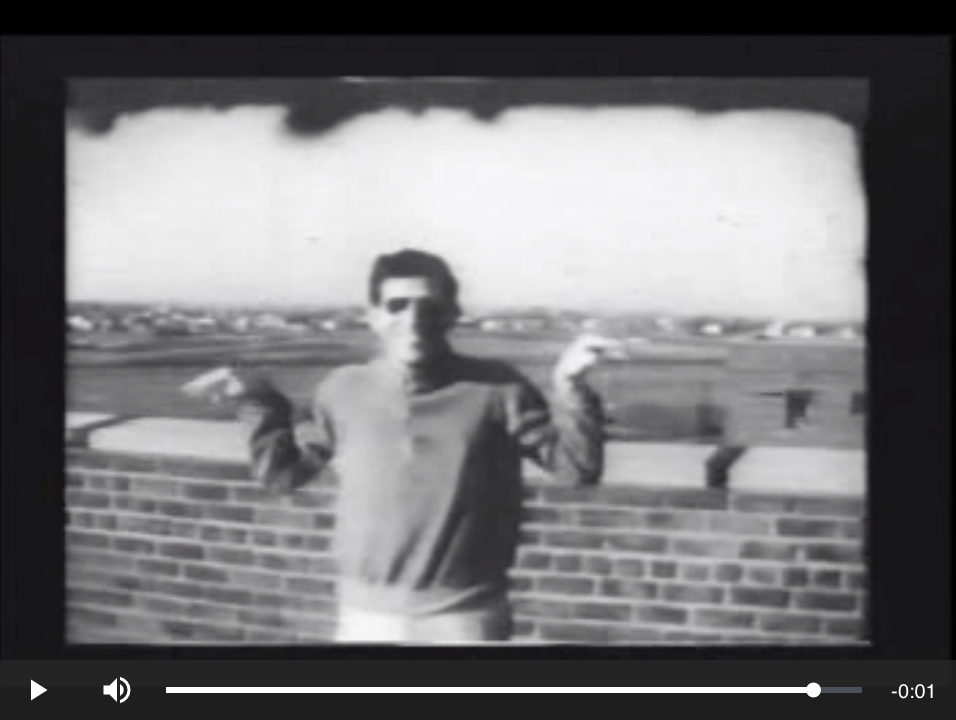
_______________
Diploteratology: Bardo Follies (1967)
‘His remarkable faculty is as maker of images … the images he photographs are among the most radical, super-real and haunting images the cinema has ever given us.’ — P. Adams Sitney

_______________
Film That Rises to the Surface of Clarified Butter (1968)
‘This film had already been in my mind for a very long time, this type of film. I wanted to do a film which dealt with drawings which somehow had a life of their own, which existed in the same space as real objects and yet still had their own two-dimensional space. I wanted a kind of imagery that didn’t refer to anything in our visual vocabulary, and also was so non-objective that it didn’t refer to anything.’ — George Landow (aka Owen Land)

_______________
Remedial Reading Comprehension (1970)
‘Two kinds of material are used: 1) Material in the tradition of the “psycho-drama” or “personal film”; 2) Material of the sort used in industrial, educational, or advertising film. Questions are raised about the necessity of using acceptably “artistic” material to make a work of art, as well as about the relationships between “personal” and “impersonal” works. “One of the ways that REMEDIAL READING COMPREHENSION works is in the degree of filmic distance which each image has in the film. Distance here refers to the degree of awareness on the part of the viewer that the image he is watching is a film image, rather than ‘reality.’ [Land’s] film does not try to build up an illusion of reality, to combine the images together with the kind of spatial or rhythmic continuity that would suggest that one is watching ‘real’ people or objects. It works rather toward the opposite end, to make one aware of the unreality, the created and mechanical nature, of film.’ — Fred Camper
_______________
Thank You Jesus for the Eternal Present (1973)
‘A rapturous audiovisual mix that `deliberately seeks a hidden order in randomness.’ The film combines the face of a woman in ecstatic, contemplative prayer with shots of an animal rights activist, and a scantily clad model advertising Russian cars at the International Auto Show in New York.’ — IFFR
_______________
New Improved Institutional Quality: In the Environment of Liquids and Nasals a Parasitic Vowel Sometimes Develops (1976)
‘A reworking of an earlier film, Institutional Quality, in which the same test was given. In the earlier film the person taking the test was not seen, and the film viewer in effect became the test taker. The newer version concerns itself with the effects of the test on the test taker. An attempt is made to escape from the oppressive environment of the test – a test containing meaningless, contradictory, and impossible-to-follow directions – by entering into the imagination. In this case it is specifically the imagination of the filmmaker, in which the test taker encounters images from previous Land films …. The test taker is “initiated” into this world by passing through a shoe (the shoe of “the woman who has dropped something”) which has lost its normal spatial proportions, just as taking the test has caused the test taker to lose his sense of proportion. As he moves through the images in the filmmaker’s mind, the test taker is in a trance-like state, and is carried along by some unseen force …. At the end of the film the test taker is back at his desk, still following directions. His “escape” was only temporary, and thus not a true escape at all.’ — Canyon Cinema
______________
On the Marriage Broker Joke as Cited by Sigmund Freud in Wit and Its Relation to the Unconscious or Can the Avant-Garde Artist Be Wholed? (1977)
‘ON THE MARRIAGE BROKER JOKE … turns upon an opposition of Freudian analysis and Christian hermeneutics …. Two pandas, who exist only because of a textual error, run a shell game for the viewer in an environment with false perspectives. They posit the existence of various films and characters, one of which is interpreted by an academic as containing religious symbolism. Sigmund Freud’s own explanation is given by a sleeper awakened by an alarm clock.’ — P. Adams Sitney

*
p.s. Hey. ** Armando, Hi. I hadn’t noticed that about Malick, but, based on a quick thought/rerun, I think you’re right. Huh. Sorry, yesterday was an intense day. I’ll get to your email today. I have no idea about the ‘Crowd’ shows in Annecy. Check the theatre’s website? No, ‘TIHYWD’ is a piece from more than ten years ago. It has played in Paris five times before over the years, I think. ** Corey Heiferman, Hi. Ah, I see, it’s a place to exhibit rather than film? Gotcha. You need interns. ** David Ehrenstein, Hi. I still think mentioning your sale on social media would get more response than just mentioning it here. Everyone, FaBlog takes on the Chris Matthews controversy right here. ** _Black_Acrylic, Hi. Yeah, there’ve actually a bunch of artists/filmmakers/musicians who’ve set pianos on fire. I ended up having to pick and choose for the post. Interesting about the new DG film, and obviously cool that you’re getting a showing there. ** Bernard, Hi, B. Well, there’s still time. You’re most welcome about the ‘Golden Boys’ retrieve. Once I realised I could do a decent ‘best of’, it became a no brainer. You are, and will always be, The Sex Guy, don’t worry. Ha ha. Oh, shit, get and feel better. You must tail-ending it now, yes? You’re going to AWP. I’ve always wanted to go, but it’s always too difficult for whatever reason. It seems like it should be very invigorating. And, yeah, so many interesting writers and presses to interact with face to face. That should be pretty swell. I’d be curious to hear what you make of it. Ah, okay, UK and Ireland. Hopefully without heatwaves. And Paris will be a Eurostar away if you need a fix. Cool, thank you for letting Diarmuid know people are excited for his book. That post got ‘likes’ mega-galore. Pretty crazy. Get well immediately. ** Misanthrope, Oh, sure, you know me, every possible ramification of every post is thought through like a fine toothed comb before I launch it. Wouldn’t want to screw anyone up. I liked things about ‘Heredity’, and I didn’t like other things about it. Which is the case in general with these ‘artful’ horror films that seem to be the trend du jour. Maybe it was just your descriptive abilities, but your MRI experience sounds kind of fun to me. Coronavirus is pretty impactful over here in different ways. Normally the area where I live is completely swarmed with tour bus-originating Chinese tourists in these giant clumps that fill the sidewalks day and night, and, in the last two weeks, I haven’t seen a single one of them. Just one tiny offshoot. But, yeah, in Italy right now it’s scary. So I think it’s a real thing. ** Bill, Hi, Bill. Yes, indeed, about Alex Rose, but I think in his work it’s always the fire’s aftermath? I could be wrong there. If letterboxd is the force behind your curtain, you’re still the Wizard of Oz in my book. My copy of the Steve Abbott book is in the mail. I’m excited. ** Okay. I urge you to use the opportunity the blog affords you today to get to know or re-appreciate the films of the lovely and peculiarly brilliant filmmaker Owen Land. See you tomorrow.




 Now available in North America
Now available in North America 
My book Film: The Front Line –1984 contains a chapter devoted to Owen Land. Two things of import about him. 1) He was the projectionist for the Filmmaker’s Cinematheque for several years in the mid-6os, and did a spectacularly professional job of it. 2) He went from being a Tibetan Buddhist to being a Jesus Freak. I always found him to be polite but at a considerable remove from other carbon-based life forms. I have a picture I took of him about a year before he died. He’s woefully thin
Howdy stranger. Thought I’d stop by and say hi. I’ll be in Paris next week, maybe see you around. Anything major Coronaprotests or anything? Any art going on? Saw this and thought of you. Hugs
Vest
Several new favorites here, thanks a million! I wonder if my university film archive has more on VHS. Got some good laughs out of these videos.
Let me back up a little bit. I wasn’t clear about this place I’m researching and filming. It’s an anarchist workshop the provides free access to tools and materials for anybody who comes in wanting to do any kind of project. It’s generally not an art exhibition space but if I made a film about them I’m sure they’d project it there.
I kind of do have interns coming my way lol. The freshmen are required to work a certain number of hours on grad students’ summer projects. I’ve identified the more mature and responsible ones so might as well start recruiting.
Are you a note-taker? I have a horrible memory so I’m trying to start taking more notes on what I read, watch, listen to, etc. Your blog is a source of inspiration. in this respect I figure if you put posts together six days a week like clockwork I can at least keep track of my own thoughts in writing and who knows maybe revive my own blog.
If coronavirus becomes a serious problem in the US, our screwed-up health care system will make things much worse.
There’s a Satanist on YouTube who claims he made up the spell to conjure Paimon that was used in HEREDITARY. Of course, he says the filmmakers made a few changes so that the actors wouldn’t actually conjure demons.
Haha I watched the Ben Lazarus doc on Dialogues, and Owen Land is still a mystery to me. Thank You Jesus for the Eternal Present is a rapturous experience. I can’t help but like the guy.
@ Misanthrope, I had yet another MRI last week and this time their headphones weren’t working, so I had to make do without the usual ABBA soundtrack accompaniment. Not such a bad thing, I’m quite into those weird magnetic soundscapes they make.
Like me, my friend Kirsty Stevens has MS and she makes these cool designs out of her MRI scans.
Hey Dennis – The timing of this day is perfect. Last night, I was testing the print for Land’s “Marriage Broker Joke” which we’ll screen on Friday + Saturday — and naturally I was thinking of you and when this post might appear. This is a real treasure trove and so happy to see it.
“Marriage Broker” looks great, though I am a bit concerned about some of the content – particularly the stereotypical accent in the scene with designer and the jar sizes of Marriage Broker plums. Thinking in general about ways to frame his work and this post is helpful in that regard too.
Was also thinking of you watching the jaw-droppingly amazing Brakhage print of “Portals for the Gates of Heaven,” and how film really is far superior to seeing the work digitally. The frame movement, the colors, the softer quality of the light. The Paul Sharitis looks fantastic as well. Wish you were here.
How’re things there? What have you been working on lately?
xxJeff